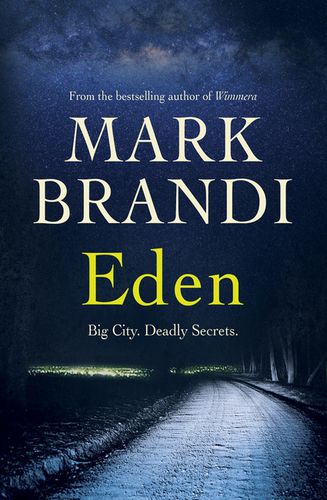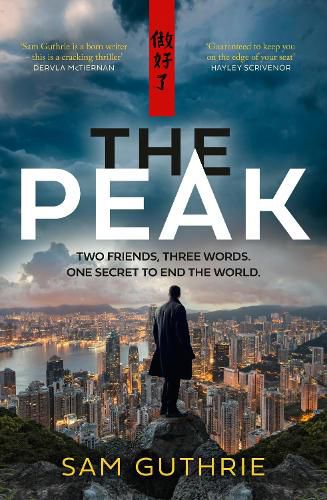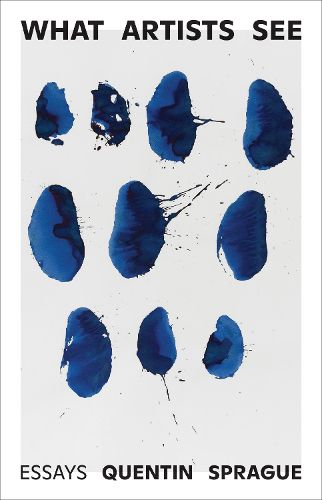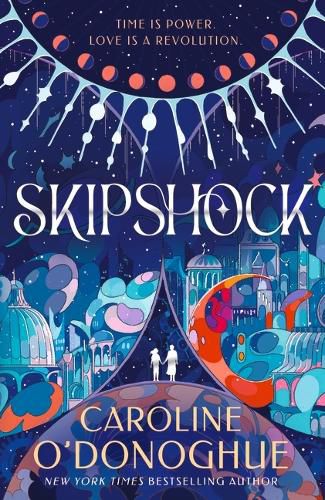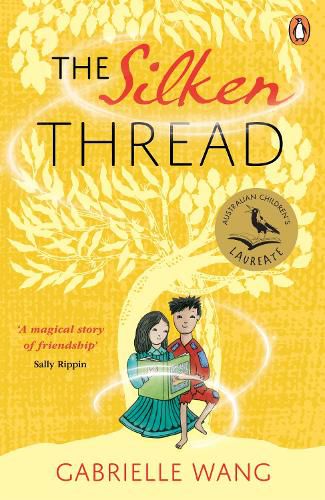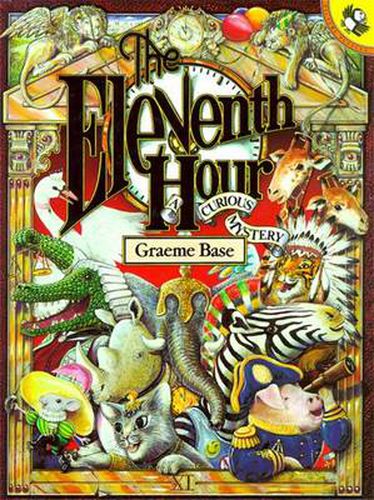Explore our books of the month for July.
Each of the below titles has been read and recommended by our booksellers before being selected as our book of the month for its category.
Fiction Book of the Month
Eden
Mark Brandi
I’m fortunate to live near the Melbourne General Cemetery and my dog and I often walk through it on our way to Princes Park; I try to read the oldest headstones, particularly those that sit in a little meadow under a grove of peppercorn trees. It’s peaceful there and provides me time for reflection. Often, I pass the memorial for two dear friends, sisters Mietta and Trish O’Donnell, designed by architects Six Degrees; it’s a strikingly beautiful, simple, modernist structure sitting amongst the ornate marble memorials favoured by more traditional families. There are small rotundas dotted throughout the cemetery that have been useful when an occasional downpour hits. The late Boyd Oxlade set part of his darkly comic novel Death in Brunswick in the cemetery. On a number of occasions, I’ve run into writer Mark Brandi and his dog, either in the cemetery or in Macpherson Street, which runs along its northern boundary. I like Mark a lot; he’s a charming, compassionate and intelligent man. He’s also a writer whose books I’ve enjoyed and admired. Mark’s work demonstrates an empathy for the marginalised in our society. His books are often classified as literary crime, and in some sense they are; they race along with unexpected twists and turns, but they also explore experiences and emotions on more profound levels.
In his latest novel, Eden, Tom Blackburn is released from prison after serving nine years of a sentence for accessory to murder. We don’t discover until later how he came to be in this situation, but he’s determined to put that behind him and to try to rebuild his life and rekindle the relationship that ended when he was sent to prison. As an ex-prisoner, his options are limited and they become even more limited when he loses his meagre savings from his prison work. We feel for him, for his lack of agency as he’s exploited and manipulated. Sleeping rough seems to be his only option, but that brings with it challenges of violence and police harassment. A chance comment that the cemetery is a safe place to sleep when the gates are locked at night leads him there and then by further chance to a job in the cemetery. Cyril, the overseer, offers him a lifeline; without asking questions, he seems to understand and have sympathy for Tom’s predicament. The work is strange but honest and gives Tom a place to stay – in the maintenance shed at the Macpherson Street gate. He tentatively reaches out to his old girlfriend; she’s in a relationship but Tom can sense that there’s still a chance for him – she doesn’t reject him outright. Maybe things are going to turn out okay.
But then Tom’s peace is interrupted by a journalist wanting to uncover why he did what he did, dragging the trauma of his crime back into the open. Tom’s equilibrium is also challenged when Cyril offers him a deal, one in which there can only be one winner – and it’s not Tom. Confronted by a moral choice and pressures from all sides, Tom struggles with what to do. In the cemetery, he thought he’d found his Eden, and now it looks like Hell.
I think this is Brandi’s best work since his award-winning debut, Wimmera; it’s an enthralling story with wonderful characters, mystery, moral dilemmas and, at its centre, the brooding hulk of the Melbourne General Cemetery. You won’t look at a grave the same way again.
Reviewed by Mark Rubbo.
Crime Book of the Month
The Peak
Sam Guthrie
If you were to approach me in the shop and ask how I’d describe this book in three words, I’d say: unputdownable, propulsive, and explosive. After I’d recovered from the shock opening, the subsequent few hours I spent reading The Peak simply flew by. This is my kinda book, and it’s definitely one for all the politics wonks and nerds out there whose Sundays begin with a panel discussion on the national broadcaster. You know who you are. Very likely you’ve got a subscription to the Quarterly Essay, you rewatch Paul Abbott’s State of Play (2003), anything Armando Iannucci has done, and you reckon that the O.G. Francis Urquhart (in the BBC’s House of Cards) was the best. At least, that’s what’s on my bingo card.
Political intrigue, contemporary geopolitics, and a national security threat all bubble away over the course of The Peak while Charlie Westcott grapples with the incredible events of the morning. Who, or rather, what had his best friend and colleague Sebastian Adler become? And what the hell is happening to the country? Why is the power out in Sydney and Melbourne? We’ve all had a shocker of a workday at some point, but this one takes the cake.
As with John le Carré and Frederick Forsyth, whose careers in intelligence made excellent foundations for their thriller writing, so does Sam Guthrie’s experience as a political insider in the diplomatic corps. From the attention to detail and the level of research, it is clear Guthrie worked long and hard on crafting, and then fine-tuning, this plot. Set across a 24-hour period, this is an astonishing and thoroughly accomplished debut. Bring on the next book, please!!!
Reviewed by Julia Jackson.
Nonfiction Book of the Month
What Artists See
Quentin Sprague
This delightful collection of essays explores the world through the eyes of an artist. Author Quentin Sprague has been immersed in the art world, variously working as a curator, an art coordinator, a researcher and as an artist. He is well known for his art writing and criticism, as a frequent contributor to various Australian publications, such as the Monthly, as well as writing for exhibition catalogues. His first book, The Stranger Artist, won the 2021 Prime Minister’s Literary Award for Nonfiction.
Sprague’s first essay opens into a scene familiar to many Australians who, like me, have grown up in the country. The long journey home from somewhere bigger and the landmarks that develop through retracing that trip over and over. He talks about the hill his mother named ‘The Birthday Cake’, a name handed down to him and his sister, which became a sign that they had re-entered their home landscape. What might just be a bump in the land for one traveller is a nexus of meaning for another. This beginning builds up the focus on idiosyncrasy across the essay collection, exploring the unique grain of artistic perception that shapes a person’s artistic practice. What does it mean to see the world like an artist?
Sprague is also a talented writer, to say the least. Each of these essays pulls you into a different world. They are grounded in thorough research and interviews with artists. Delightfully, Sprague allows for contradictions and the rough edges to show, the moments of resistance from the artists he interviews, when they refuse the narrative or his framing of them, which creates small but interesting bubbles of tension. I would recommend this book for people interested in the Australian art scene, lovers of biography in general, or even those fascinated by what makes people tick.
Reviewed by Stephanie King.
Young Adult Book of the Month
Skipshock
Caroline O’Donoghue
I loved this book so much I read it twice! Caroline O’Donoghue is the author of the romance novel The Rachel Incident, a supernatural young adult (YA) series, and host of the popular podcast Sentimental Garbage, but her new YA novel Skipshock is unlike anything she’s done previously.
When 17-year-old Margo is on a train to Dublin, something strange happens: suddenly she is on a different train in a world where no one has even heard of Dublin. The only other passenger is Moon, who, although the same age as her, has been working for years as a travelling salesman. Here, as in the Railhead series by Philip Reeve, trains transport people between worlds. However, worlds differ in the length of hours that constitute a day, and Margo has just landed in a world with only a six-hour day. ‘Skipshock’, like jetlag, is an unfortunate physical side effect caused by the challenge of moving rapidly between worlds.
There is a dominant power, the Semper, trying to control the trains and thus all the worlds. There is also a well-organised resistance called PACT; an ostracised race, the Lunati, to which Moon belongs; and a watch, given to Margo by her father, that can break trains connecting worlds. This watch makes Margo an important figure to both the Semper and PACT.
Skipshock is science fiction, with all the high concepts and fascinating ideas you’d expect, but it’s also a character-based romance between Margo and Moon. Written with the utmost authenticity and compassion, it makes you wish with all your heart that, against all odds, things will work out for them. My only complaint is that the cliffhanger ending will remain unresolved for readers until the sequel is published in 2026! Skipshock is an entirely original and utterly brilliant novel for adults and teens aged 14+.
Reviewed by Angela Crocombe.
Kids Book of the Month
The Silken Thread
Gabrielle Wang
Stitching together 1930s Carlton with Chongming Island in China, Gabrielle Wang weaves a lushly realised tale about Moonie and Little Dipper, who both strive to live up to their own expectations, half a world apart. These two resilient kids both face the seemingly insurmountable challenges of loss, communication, financial uncertainty and discrimination. But with a little bit of magic, as well as a lot of friendship, hard work and creativity, they learn how to tap into their own strengths, and also that much more challenging lesson: accepting help from others.
This magical tale weaves a vivid picture of Depression-era Australia and China through the eyes of two protagonists whose tenacity and friendship are the beating heart of the story. Charmingly illustrated by the author herself, this book will whet your appetite for more – lucky then that this is one of many by the 2022–2023 Australian Children’s Laureate! For ages 9+.
Reviewed by Tamuz Ellazam.
Picture Book of the Month
Tiwi in Paris
Glen Farmer Illortaminni
I spoke English, they spoke French, nobody spoke Tiwi.
In this brilliant picture book, Glen Farmer Illortaminni tells the story of accompanying his uncle, artist Timothy Cook, to Paris as an interpreter. They arrived in Paris from the Tiwi Islands, and following a dinner of frogs’ legs and spaghetti, Glen found himself wide awake at nighttime and ducked out for a walk. Unable to speak French, and without a hotel key or phone, he became lost and spent days treading around Paris doing his best to stay warm and safe and to find his way back. He takes the Metro, returns to the airport, visits a big market and a hospital, and sleeps in a church, before finally making his way to the Australian embassy.
Although it must have been a very scary and stressful few days, Farmer Illortaminni tells his story in a calm, matter-of-fact tone and shares wonderful details about the people and places he encountered, and of his home, Milikapiti, which is 13,710 kilometres away from Paris’s famous landmarks. An artist and printmaker, his illustrations feature colour washes that contrast beautifully with black ink and strong lines. On some pages the people are very small – tiny stick figures in a big city. Other pages showing time spent in company have a much closer perspective; kind strangers have character and smiles. Tiwi in Paris is a remarkable story, and an utterly unique experience of Paris. For anyone aged 3+.
Reviewed by Kim Gruschow.
Kids Classic of the Month
The Eleventh Hour: A Curious Mystery
Graeme Base
From the author of classic children’s books such as Animalia, Uno’s Garden and The Waterhole, this picture book, first published in 1988, is one of the greatest illustrated mysteries any child could ever hope for.
There is a birthday party, and a birthday feast is prepared, and games are played, and presents are gifted, and then – the feast has vanished before any of the guests have had a single bite! Who ate it? And when? And how could they eat so much, so quickly?
Despite appearances, this is not a picture book for the very young, but rather an intriguing whodunnit, and one the reader will need to comb their way through again and again. Every inch of every page could hold a clue, every picture reveals another layer. And just when you think you’ve discovered every possible secret, trust me, you’re not even close! For ages 5+.
Reviewed by Kate McIntosh.


